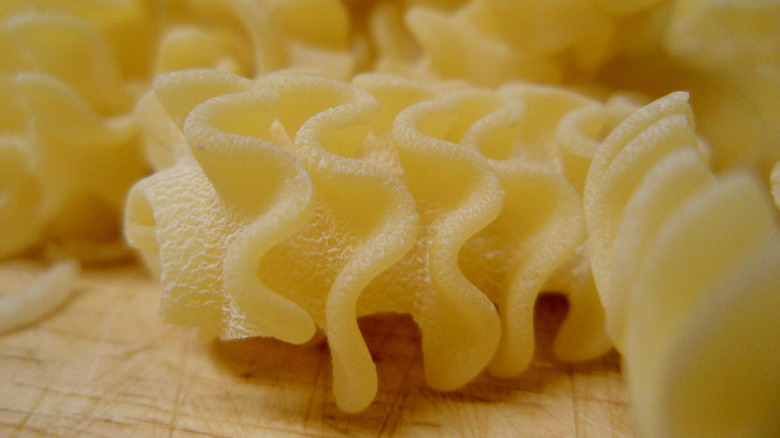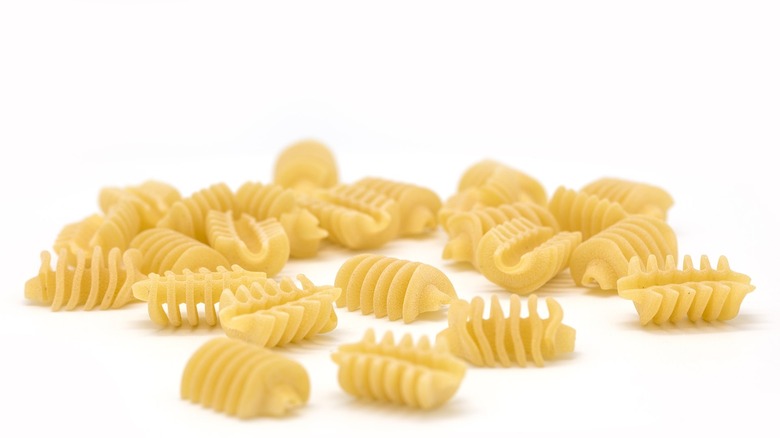Radiatori Is The Radiator-Shaped Pasta With Debated Origins
Estimates suggest there are anywhere from 300 to 400 pasta types in Italy. However, determining the precise total is tricky. With different regional names for the same noodle and pasta makers constantly creating new shapes, the assortment of possibilities is dizzying. As a result, it is no surprise that some varieties arose from murky origins. Take the mid-sized, bristled radiatori.
Translating to "radiator" from Italian, the name inspires industrial associations. Nevertheless, some still believe it may be lavish in nature, with nomenclature emerging in the 1960s in reference to the grill of a Bugatti car. After all, taking inspiration from the automobile industry is nothing new for pasta makers — just look at the cog-like rotelle. Others suppose its creation is less luxurious, saying it was developed between the World Wars, inspired by the shape of mid-century radiators that heated homes and apartments. Regardless of its disputed emergence, one characteristic is clear — the pasta variety is delightful.
How to cook with radiatori
Radiatori has a unique shape, with a series of parallel-wavy grooves, curved around a cylindrical body. However, unlike penne, they are not fully circular, with a concave opening on one side. Such a form makes them ideal for sopping up sauce, as the texture adds an intriguing element to a dish. The durum wheat-based noodles do especially well with greens, and their consistency melds with a spinach sauce or a fresh pesto. Alternatively, they also beautifully combine with a staple sauce — offering a unique spin on bolognese or tomato marinara.
In addition, radiatori's texture is esteemed for reworked applications, such as casseroles, pasta salads, and baked noodle dishes. They'll add a fresh take to a baked ziti or redefine the consistency of a pasta salad. You can even add them to a pasta soup. They would be a welcome component of pasta e fagioli or a minestrone, with the grooves ladling the delicious broth.
For further applications, swap in radiatori in any dish calling for fusilli. The indented shape is similar and won't clash with other components in the recipe. Regardless, it's unlikely the pasta will feel out of shape — if anything, the unique form is its calling card.

